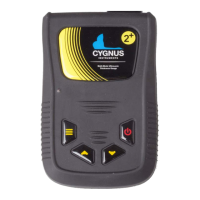Measurement Modes Explained and Compared
Multiple Echo Mode (ME) (Mode 3)
Multiple Echo measurement mode is by far the most reliable and
easy method for thickness measurements, because it works by
looking for three matched echoes it can verify the thickness
measurement is valid. This method has been used in all Cygnus
gauges since the late 1970s.
Multiple echo mode will ignore surface coatings (Through Coating
mode), there is no need to remove the paint to take a
measurement.
Also because it uses a single element (or single crystal) probe
there are no errors due to the V-path of the ultrasound beam
found in all twin element probes. This makes it simple to calibrate
– two point calibrations are not required.
However because it requires three echoes to take a measurement,
in heavily corroded steels there is often an insufficient number of
echoes so no measurement is possible.
Single Echo Mode (SE) (Mode 2)
Single Echo measurement mode is most useful on heavily corroded
metals where Multiple Echo fails. Because it only needs the first
return echo to take a measurement it performs well on virtually all
steel conditions.
However single echo mode will not ignore any surface coatings, so
if you measure through a coating it will give an incorrectly metal
thickness measurement . If the surface coating is very thin paint
(0.2mm / 0.01”) you can make an allowance for this error, but
thicker coatings introduce too much error to be practical.

